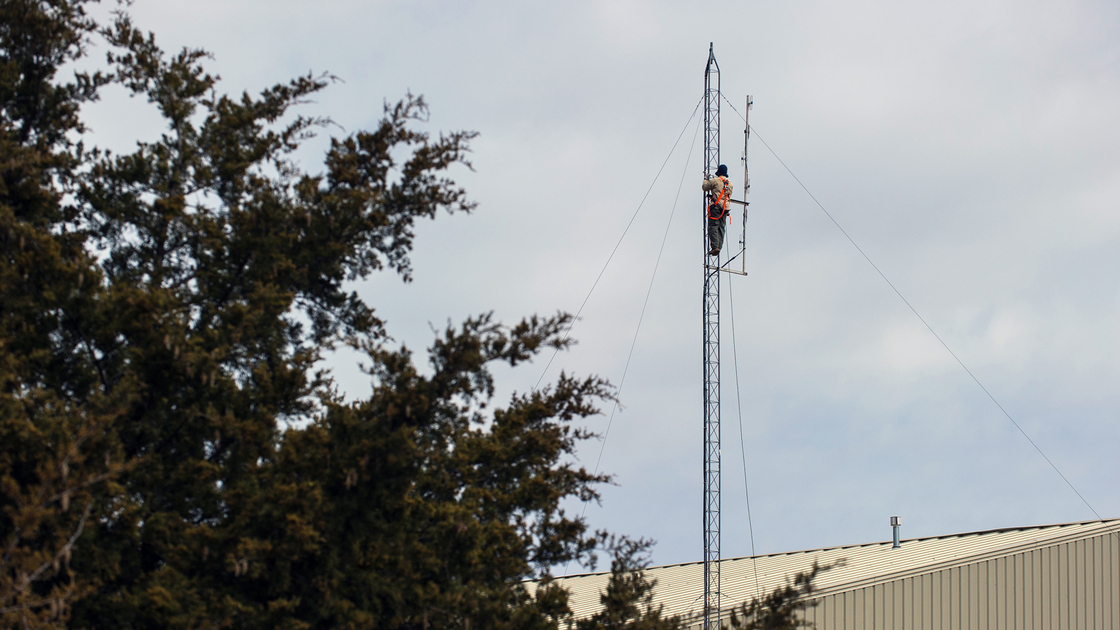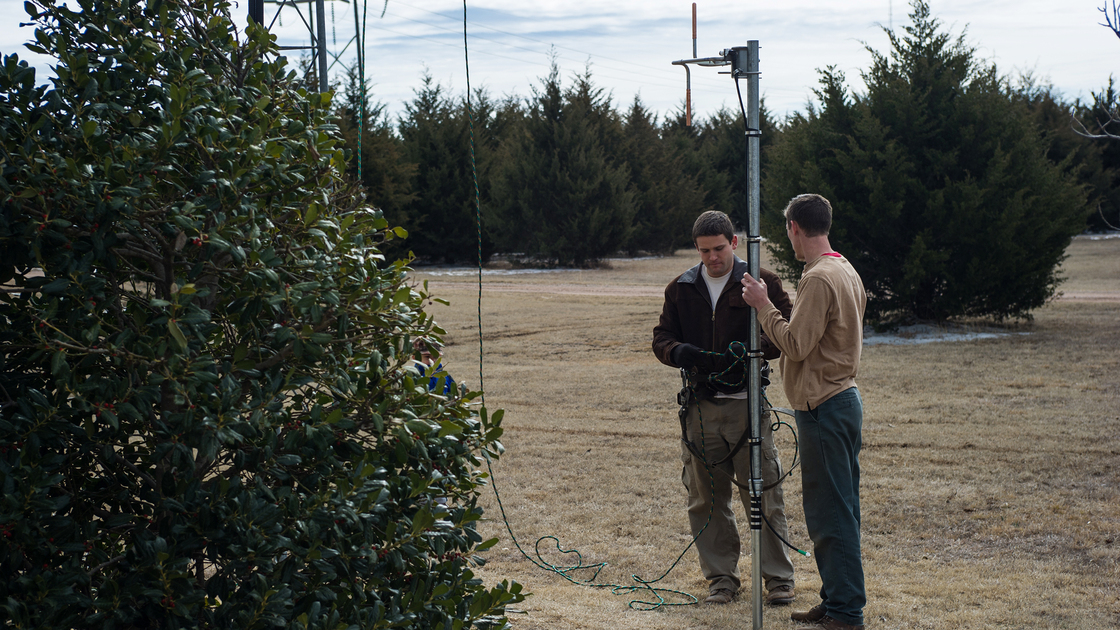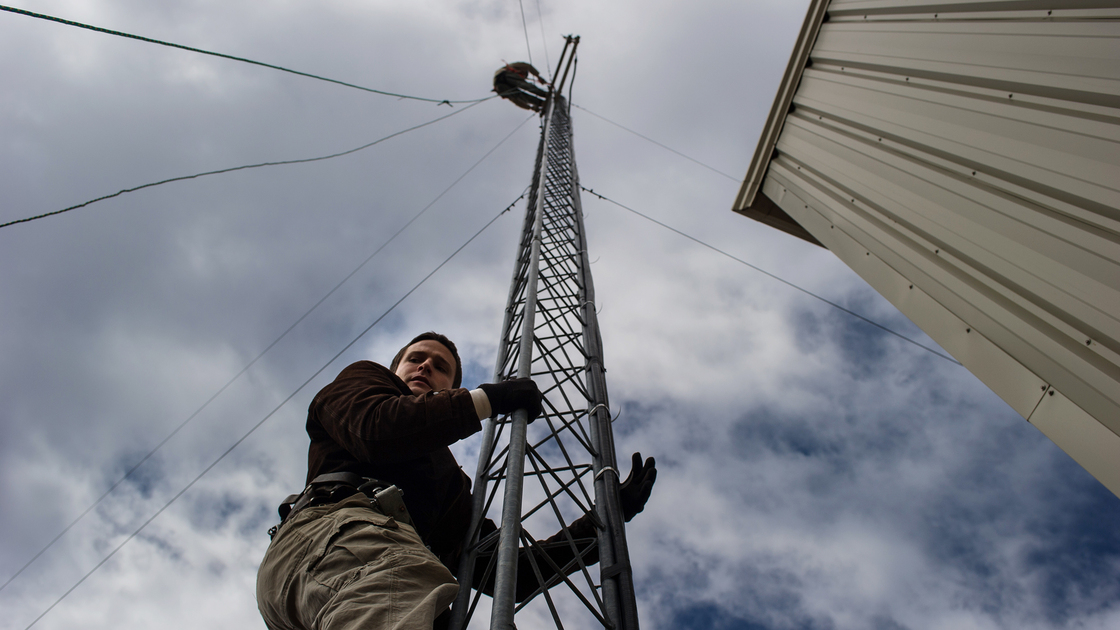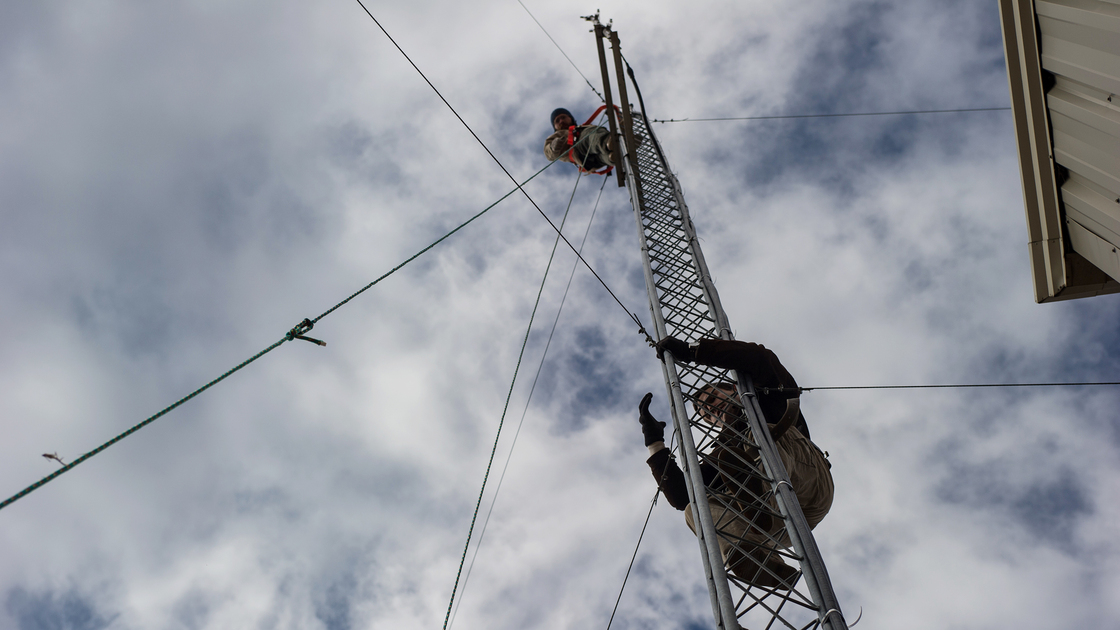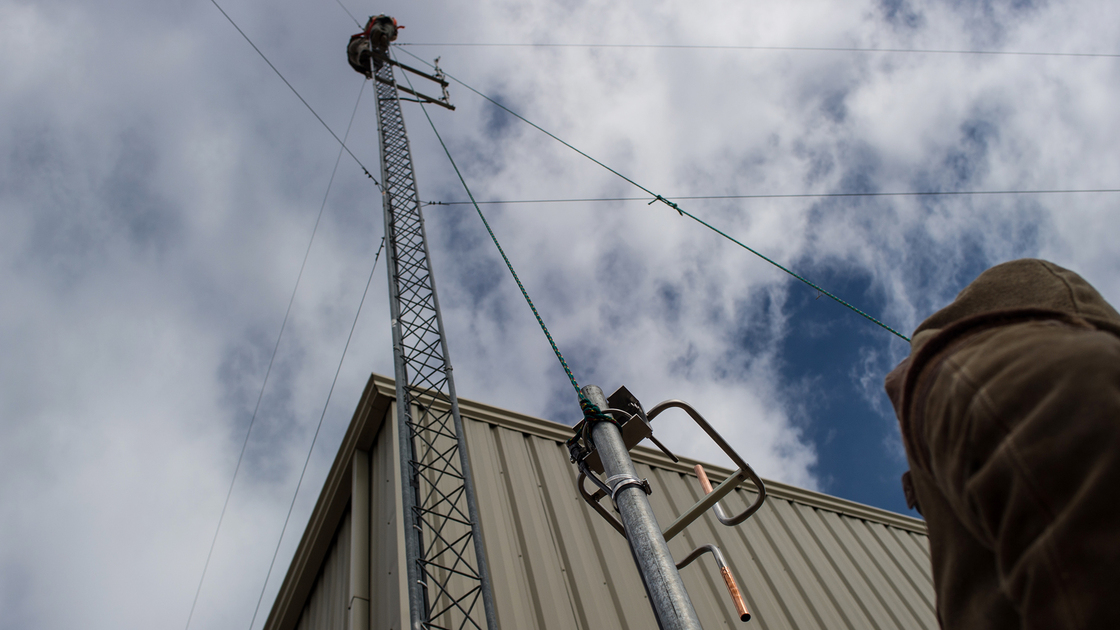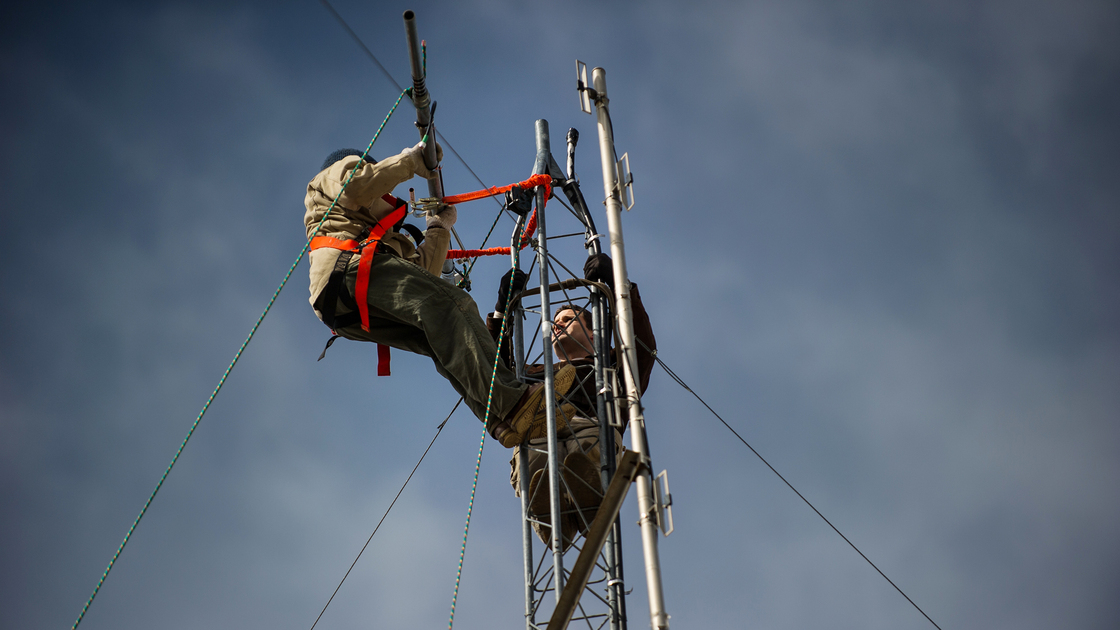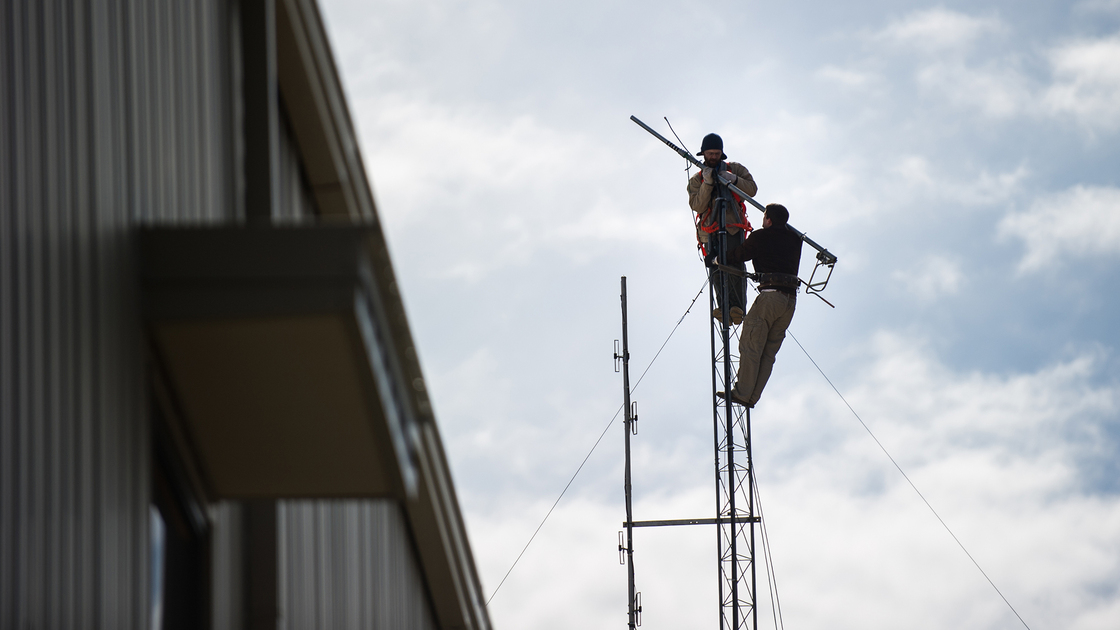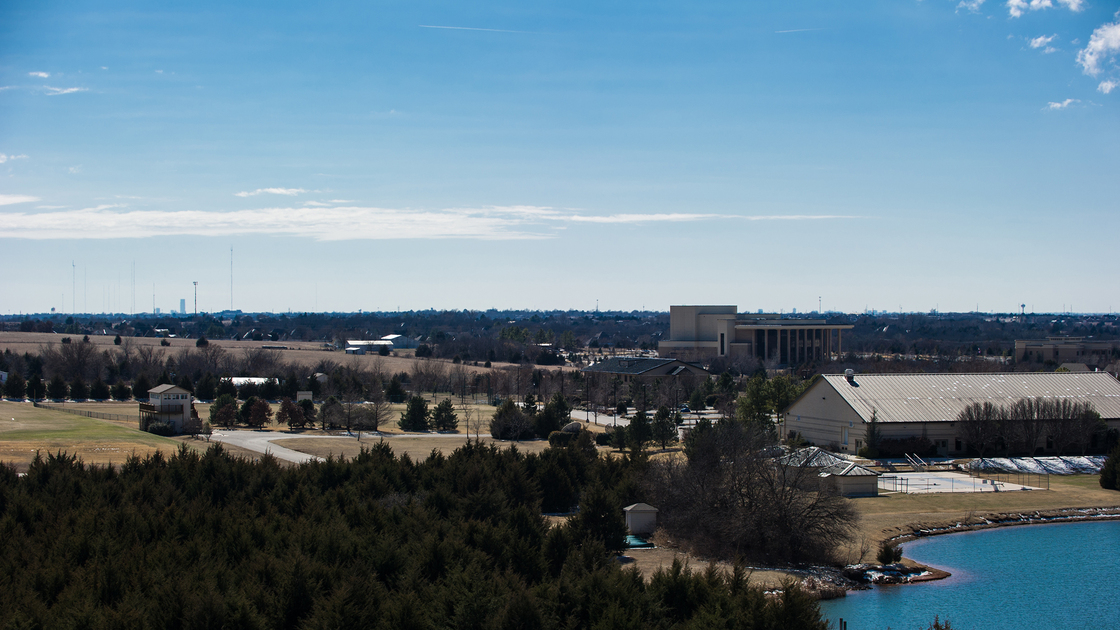EDMOND—Headquarters employees raised an FM antenna on February 18 for kpcg-lp, the Philadelphia Church of God’s new radio station. kpcg-lp will broadcast 24/7 to the area surrounding the campus and may begin streaming on the Internet in March.
kpcg-lp 101.3 FM is a non-commercial, low-powered radio station. Its 34-watt broadcasting capacity covers a six-mile listening radius with continuous, reliable coverage (approximately 110 square miles). Listeners at further distances who have a strong receiver or favorable weather conditions will also be able to receive the station, as will those who visit the station’s website.
Herbert W. Armstrong College President Stephen Flurry said the station’s programming will include audio from the Key of David and Trumpet Daily programs, music from the Philadelphia Singers, and potentially concerts at Armstrong Auditorium and messages by the late Herbert W. Armstrong.
“I’m sure we will do some experimenting early on,” Mr. Flurry said, “but my father is really excited about the potential. He feels like this would open the way for us to reach a larger audience with much more content.”
Preaching Elder Robert Locher, who traveled from Colorado to engineer the station, said kpcg-lp is another way to put a spotlight on what the Philadelphia Church of God is doing on the headquarters campus.
Information Technology staff member Stephen Coats said kpcg-lp is a great open door because it will reach a different audience than the Church’s websites and magazines.
“Members could be praying about the content,” Mr. Flurry said, “and also for God’s guidance in connecting all the technology media we have the right way—tv, radio, websites, mobile apps and so on.”
Mr. Locher and Mr. Coats said they were hopeful that members would pray for the station’s equipment to be reliable and protected from damage.
A crew of six worked February 13 through 24 to install the hardware for the station at the Mail Processing Center at the northeast corner of the pcg campus in Edmond, Oklahoma. Mr.Locher, a radio enthusiast for 60 years, ordered the equipment and arrived in Edmond on February 16 to help install it. Headquarters staff members Stephen Coats, Benjamin Tauer, John Rambo and Conner Brown helped with installation along with AC students Kyle Tremblay and Charles Wittsell.
Brown and Rambo placed the antenna February 18. The two donned safety harnesses and climbed the 70-foot tower to its peak, from which Brown said he could clearly see a 360-degree panorama of the campus and all the way to the 19-mile distant Devon Tower in downtown Oklahoma City.
The crew is currently configuring the interfaces for the FM transmitter and the Emergency Alert System along with the station’s software. The crew also needs to obtain blanket licenses and determine royalties for the station’s music.
Once kpcg-lp’s equipment is in place and compliant with the regulations of the Federal Communications Commission, the actual programming for the station will emanate from the control room of the former Key of David television studio in the Mail Processing Center, where the announcer will speak into a microphone that feeds the signal into an audio mixer. The mixer not only adjusts the volume and quality of the audio, but also incorporates recordings, phone calls, and other live guests into the programming. In emergencies, the resulting audio signal may give way to an extreme weather warning or other Early Alert System warning. The signal then travels to the FM transmitter, which converts the audio signal into radio frequency. The radio frequency signal then travels through the mpc wall up a 75-foot coaxial cable to the top of the tower and into the transmitting antenna mounted on top of the 70-foot tower beside the mail building. The antenna radiates the radio frequency signal as radio waves broadcasting the announcer’s voice over 110-square miles of cars or personal radios.
The pcg obtained a low-power FM radio license from the Federal Communications Commission on January 23. This license authorizes a low-power broadcast for non-commercial purposes over a relatively small area so as not to interfere with other stations broadcasting on that same wavelength.
Mr. Locher said interest in a pcg radio station has existed for 10 years or more, but when he first enquired, industry experts said there was no chance of obtaining a new license. The only other option, purchasing an existing license, was out of the question because existing transmitters may not be moved more than two miles.
The pcg applied for a lpfm license in October 2013. Mr. Flurry said he and Chief Financial Officer Andrew Locher found out about the licenses for community organizations near the deadline and immediately applied.
“So we just kind of stumbled upon it, realized that we only had a few days to act on it, and so we did,” Mr. Flurry said.
Mr. Robert Locher said that lpfm licenses are difficult to obtain because the radio spectrum is limited and demand for the limited supply of licenses is high.
“It was nothing short of a miracle that we got it,” he said.
Mr. Gerald Flurry, Mr. Andrew Locher and other staff members met this afternoon to establish the initial content of the station’s programming. Mr. Locher said that if the hardware, software, programming and editing work can be completed in time, he hopes to take the station to air by mid-March.
